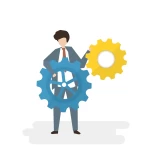- Table of Contents
- What Is Periodic Maintenance and Why Is It Necessary?
- How Does Periodic Maintenance Impact Equipment Longevity?
- What Role Does Periodic Maintenance Play in Safety Assurance?
- How Can Periodic Maintenance Lead to Cost Savings?
- What Are the Environmental Benefits of Regular Maintenance?
- What Are Common Challenges in Implementing Periodic Maintenance?
- What Are the Latest Trends and Technologies in Periodic Maintenance?
Introduction
Periodic maintenance is a critical practice for ensuring the longevity, safety, and efficiency of equipment and systems. Through scheduled inspections, cleaning, and repairs, it preemptively addresses potential issues, minimizing downtime and maximizing performance. Essential for various industries, periodic maintenance not only safeguards operational continuity but also significantly contributes to cost savings, environmental sustainability, and compliance with safety standards. This article delves into the importance of periodic maintenance, exploring its impact on equipment longevity, safety assurance, cost-effectiveness, and more, while also highlighting common challenges and emerging trends in maintenance practices.
What Is Periodic Maintenance and Why Is It Necessary?
Periodic maintenance, often referred to as preventive maintenance, is a scheduled sequence of maintenance tasks performed to prevent equipment failures before they occur. It involves regular inspections, servicing, and repairs to ensure that machinery, vehicles, or systems operate smoothly and efficiently over their expected service life. This approach contrasts with reactive maintenance, which addresses issues only after a failure has occurred.
The necessity of periodic maintenance lies in its numerous benefits:
- Prevents Downtime: By identifying and resolving potential issues early, periodic maintenance minimizes the risk of unexpected breakdowns that can lead to costly downtime and disrupt operations.
- Extends Equipment Lifespan: Regular maintenance helps keep equipment in optimal condition, thereby extending its operational life and delaying the need for costly replacements.
- Ensures Safety:Regular checks and servicing can identify safety hazards that could lead to accidents or injuries, ensuring a safer working environment for employees.
- Improves Efficiency:Well-maintained equipment operates more efficiently, which can lead to energy savings and higherproductivity.
- Cost Savings:Although periodic maintenance requires upfront investment, it can lead to significant long-term savings by avoiding the higher costs associated with major repairs, replacements, and downtime due to equipment failures.
- Compliance:Certain industries have strict regulatory requirements for equipment maintenance. Periodic maintenance helps ensure compliance with these regulations, avoiding legal penalties and potential shutdowns.
Periodic maintenance is essential for the reliable operation of equipment, optimizing performance, ensuring safety, and achieving cost savings. It represents a proactive approach to equipment management, emphasizing prevention over cure and aligning with best practices in asset management.
How Does Periodic Maintenance Impact Equipment Longevity?
usable life of their machinery and equipment, ensuring they perform efficiently for longer periods. Here's a detailed look at how periodic maintenance impacts equipment longevity:
- Preventive Care: Periodic maintenance involves regular inspections, cleaning, lubrication, adjustments, and replacements as needed. This preventive care helps in identifying and rectifying minor issues before they escalate into major problems, thereby preventing premature equipment failure.
- Wear and Tear Reduction:All equipment undergoes wear and tear with use. Periodic maintenance mitigates the effects of wear and tear by ensuring that all components are in optimal condition. Regular lubrication, for instance, reduces friction between moving parts, minimizing the rate of wear and extending the equipment’s lifespan.
- Corrosion Control:Many types of equipment are susceptible to corrosion, which can significantly reduce their lifespan. Through periodic maintenance, signs of corrosion can be identified early, and appropriate measures can be taken to prevent its spread, such as applying protective coatings or making necessary replacements.
- Efficiency Optimization: Equipment that is well-maintained operates more efficiently. When machines run efficiently, they are less likely to overwork, which can cause excessive wear and lead to early breakdowns. Efficient operation ensures that equipment uses the optimal amount of energy, reducing stress on the system and prolonging its life.
- Environmental Protection:External environmental factors, such as dust, humidity, and temperature fluctuations, can adversely affect equipment. Periodic maintenance includes cleaning and ensuring that environmental controls are functioning properly, which protects equipment from these external factors.
- Documentation and Monitoring: Periodic maintenance programs often involve keeping detailed records of inspections, repairs, and replacements. This documentation helps in monitoring the equipment's condition over time, allowing for better planning of maintenance activities and timely interventions that prolong the equipment's useful life.
- Manufacturer’s Guidelines Compliance: Adhering to the manufacturer's recommended maintenance schedule and procedures is essential for maintaining equipment in good condition and ensuring its longevity. Manufacturers design these guidelines to help users get the maximum lifespan out of the equipment.
- Safety and Reliability:Regular maintenance not only extends the lifespan of equipment but also ensures that it remains safe and reliable to use. This reduces the risk of accidents caused by equipment failure, protecting both the operators and the equipment itself.
In conclusion, periodic maintenance is a proactive strategy that directly contributes to extending the lifespan of equipment. It involves a comprehensive approach to care that addresses potential issues early, optimizes performance, and ensures equipment operates within safe and efficient parameters. As a result, businesses can avoid the costs and disruptions associated with premature equipment failure, securing their investments over the long term.
What Role Does Periodic Maintenance Play in Safety Assurance?
Periodic maintenance plays an essential role in safety assurance within various operational environments, acting as a proactive measure to prevent accidents, ensure the well-being of personnel, and maintain compliance with safety regulations. This process involves systematic inspections, adjustments, cleaning, and replacements of machinery, equipment, and systems to ensure they operate within their intended safety parameters. By dedicating attention to maintenance at regular intervals, organizations can significantly mitigate risks associated with equipment failure and human error, thus fostering a culture of safety and responsibility. Here's a more detailed exploration of the critical role periodic maintenance plays in safety assurance:
- Early Detection and Mitigation of Hazards: Regular maintenance checks enable the early identification of potential safety hazards, such as mechanical wear and tear, electrical faults, or structural issues, which could lead to accidents if left unaddressed. By detecting these risks early, maintenance teams can undertake necessary repairs or replacements, thereby preventing hazardous incidents before they occur.
- Ensuring Equipment and Machinery Reliability: The reliability of equipment and machinery is paramount in maintaining a safe working environment. Periodic maintenance ensures that all components are in optimal condition, significantly reducing the risk of unexpected malfunctions or failures that could endanger workers.
- Compliance with Health and Safety Standards:Adhering to industry-specific safety standards and regulations is not only a legal requirement but also a critical component of operational safety. Regular maintenance routines ensure that equipment and operations comply with these standards, helping to avoid legal ramifications and reinforce safety protocols.
- Training and Employee Awareness: An often overlooked aspect of periodic maintenance is its role in employee training and awareness. Maintenance activities provide opportunities for staff to learn about proper equipment handling, safety procedures, and the importance of reporting potential risks, thereby empowering employees to contribute to a safer working environment.
- Documentation for Continuous Improvement:Detailed records of maintenance activities, including inspections, repairs, and parts replacements, serve as a valuable resource for identifying recurring issues or trends that could indicate underlying safety concerns. This documentation supports continuous improvement efforts by highlighting areas for safety enhancements and preventive measures.
- Ensuring the Effectiveness of Safety Measures:Periodic maintenance includes the inspection and testing of safety devices and emergency response equipment, such as fire suppression systems, alarms, and evacuation routes. Regular checks guarantee that these critical systems are always ready to function effectively in the event of an emergency.
- Promoting a Proactive Safety Culture: The commitment to regular maintenance reflects an organization's dedication to safety and operational excellence. This proactive approach to maintenance encourages a workplace culture where safety is prioritized, and potential risks are systematically addressed and mitigated.
- Addressing Environmental Safety Concerns: In addition to preventing accidents and ensuring equipment reliability, periodic maintenance plays a vital role in managing environmental hazards. This includes controlling emissions, managing waste, and ensuring that containment systems for hazardous materials are secure and intact, thereby preventing environmental contamination and ensuring public safety.
- Long-term Safety and Cost Savings:While periodic maintenance requires upfront investment in time and resources, it ultimately leads to significant long-term benefits by extending equipment lifespan, preventing costly downtime, and avoiding expensive emergency repairs or legal liabilities stemming from safety incidents.
In conclusion, the role of periodic maintenance in ensuring safety cannot be overstated. It is a comprehensive strategy that encompasses various aspects of operational safety, from equipment reliability and regulatory compliance to employee training and environmental protection. By prioritizing periodic maintenance, organizations can create a safer work environment, protect their workforce, and maintain high safety standards, contributing to their overall success and sustainability.
How Can Periodic Maintenance Lead to Cost Savings?
Periodic maintenance, often viewed through the lens of an operational necessity with associated costs, is actually a strategic investment that can lead to substantial cost savings for businesses in the long run. This systematic approach to maintaining, inspecting, and repairing equipment and facilities ensures they operate efficiently, reliably, and safely. Here's an in-depth look at how periodic maintenance can lead to significant cost savings:
- Extended Equipment Life: Regular maintenance prolongs the operational life of machinery and equipment by preventing excessive wear and tear. By keeping equipment in optimal condition, businesses can defer the substantial capital expenses associated with purchasing new machinery.
- Prevention of Major Repairs: Periodic maintenance helps identify and address minor issues before they escalate into major, costly repairs. Early detection of potential problems allows for interventions that are significantly less expensive than the extensive repairs or replacements that might be needed if issues were left unaddressed until they caused a breakdown.
- Reduced Downtime:Equipment failures can lead to unplanned downtime, significantly impacting productivity and revenue. By ensuring that machinery operates reliably, periodic maintenance minimizes downtime, thus maintaining continuous production and operational efficiency.
- Improved Energy Efficiency: Well-maintained equipment operates more efficiently and consumes less energy. Regular maintenance of systems like HVAC, lighting, and manufacturing machinery can result in substantial energy savings, directly reducing utility costs.
- Optimization of Maintenance Costs: A structured approach to periodic maintenance allows businesses to plan and budget for maintenance activities more effectively. This planned maintenance can be more cost-efficient than reactive maintenance, where emergency repairs might involve rush charges for parts, higher labor costs, and other unplanned expenses.
- Enhanced Resale Value: Equipment that has been regularly maintained and is in good working condition will have a higher resale value. This provides businesses with an opportunity to recoup a portion of their initial investment when equipment is no longer needed or is being upgraded.
- Compliance and Avoidance of Fines: Regular maintenance ensures that equipment and operations comply with regulatory standards. This adherence to regulations can prevent costly fines and legal fees associated with non-compliance, not to mention avoiding potential shutdowns of operations.
- Safety and Liability:By preventing equipment failures and ensuring safe operational conditions, periodic maintenance reduces the risk of accidents and associated costs. This includes medical expenses, legal fees, compensation, and increased insurance premiums. Ensuring a safe working environment also helps in maintaining employee morale and productivity.
- Inventory Management: Effective maintenance planning includesinventory management of spare parts and materials. By understanding the needs and timing of maintenance activities, businesses can avoid excessive inventory costs or the rush ordering of parts, optimizing inventory levels and reducing holding costs.
- Predictive Maintenance Insights: Advances in technology, such as IoT sensors and predictive analytics, allow businesses to take periodic maintenance further, predicting equipment failures before they occur. This predictive approach can optimize maintenance schedules and costs, ensuring resources are used only when necessary and preventing unnecessary maintenance activities.
By integrating periodic maintenance into their operational strategy, businesses not only safeguard their assets but also unlock cost-saving potentials across various facets of their operations. This preventive approach minimizes the need for emergency repairs, extends the lifespan of equipment, enhances energy efficiency, and ensures compliance with safety and environmental standards. Consequently, the cost savings realized from periodic maintenance can significantly contribute to a business's financial health and operational sustainability.
What Are the Environmental Benefits of Regular Maintenance?
Regular maintenance, often regarded as a routine task focused on ensuring the optimal performance of equipment and systems, also holds significant environmental benefits. This sustainable practice can lead to a reduction in resource consumption, lower emissions, and a decreased environmental footprint, aligning operational activities with environmental conservation efforts. Here's a closer look at the environmental advantages of conducting regular maintenance:
- Energy Efficiency and Reduction in Resource Consumption: Regularly maintained equipment operates more efficiently and consumes less energy. For instance, cleaning and servicingHVAC systems improve airflow and thermal transfer efficiency, reducing the energy required for heating and cooling. Similarly, maintaining industrial machinery ensures it operates at peak efficiency, minimizing the consumption of electricity, water, and other resources. This not only reduces operational costs but also lessens the environmental impact associated with energy production and resource extraction.
- Decrease in Hazardous Emissions: Well-maintained equipment emits fewer pollutants. Vehicles and machinery that undergo regular maintenance, including engine tune-ups and the replacement of air filters, release lower levels of exhaust emissions. This contributes to improved air quality and a reduction in the business's carbon footprint. Similarly, preventing leaks in refrigeration and air conditioning systems by regular checks can significantly reduce the release of refrigerants that are potent greenhouse gasses.
- Waste Minimization: Regular maintenance practices contribute to waste minimization by extending the lifespan of equipment and parts, thus reducing the need for replacements and the generation of waste. Efficient operation of machinery also minimizes waste produced during manufacturing processes. By implementing regular maintenance, businesses can contribute to the circular economy, where the life cycle of materials and products is extended, and waste generation is minimized.
- Prevention of Environmental Accidents: Routine maintenance of equipment and infrastructure can prevent accidents that may have severe environmental consequences. For example, the regular inspection of storage tanks, pipelines, and containment systems can prevent leaks of hazardous materials into the environment. Ensuring that drainage systems are clear and operational can prevent overflow and contamination of local waterways.
- Resource Conservation through Predictive Maintenance: Advanced maintenance techniques, such as predictive maintenance enabled by IoT technology, allow for real-time monitoring of equipment condition. This leads to maintenance being performed only when necessary, based on actual wear and performance, rather than on a set schedule. This approach not only conserves resources by avoiding unnecessary maintenance activities and part replacements but also optimizes the use of maintenance resources.
- Improved Ecosystem and Biodiversity Protection: By reducing emissions, preventing spills and leaks, and minimizing waste, regular maintenance activities contribute to the protection of ecosystems and biodiversity. Cleaner air and waterways, along with reduced pressure on natural resources, support the health of flora and fauna in surrounding environments.
- Compliance with Environmental Regulations: Regular maintenance helps ensure that businesses comply with environmental regulations and standards, avoiding fines and remediation costs. Compliance is not only beneficial for the environment but also enhances a company's reputation among consumers, investors, and regulatory bodies.
- Promotion of Sustainable Practices: Regular maintenance supports the broader adoption of sustainable practices within an organization. It emphasizes the importance of responsibility towards environmental conservation, encouraging the implementation of green technologies and practices across all areas of operation.
Table 1:Environmental Benefits of Regular Maintenance
Benefit | Description |
Energy Efficiency and Resource Consumption | Ensures equipment operates efficiently, reducing energy and resource use. |
Decrease in Hazardous Emissions | Maintenance leads to fewer pollutants, improving air quality and reducing carbon footprint. |
Waste Minimization | Extends equipment and parts lifespan, reducing replacements and waste. |
Prevention of Environmental Accidents | Prevents accidents like hazardous material leaks. |
Resource Conservation through Predictive Maintenance | Minimizes unnecessary maintenance, conserving resources. |
Improved Ecosystem and Biodiversity Protection | Contributes to ecosystem and biodiversity protection by reducing emissions and preventing spills. |
Compliance with Environmental Regulations | Ensures compliance with regulations, avoiding fines and enhancing reputation. |
Promotion of Sustainable Practices | Emphasizes environmental conservation and sustainable practices within the organization. |
In conclusion, the environmental benefits of regular maintenance are extensive and multifaceted. Beyond its immediate impact on equipment efficiency and operational cost savings, regular maintenance plays a crucial role in environmental stewardship. By adopting regular maintenance practices, businesses can significantly contribute to reducing their environmental impact, promoting sustainability, and supporting global efforts to combat environmental degradation and climate change.
What Are Common Challenges in Implementing Periodic Maintenance?
Implementing periodic maintenance can face several challenges, from logistical hurdles to financial constraints. Here are common challenges and strategies to overcome them:
- Scheduling and Downtime Management:Finding optimal times for maintenance that minimize operational disruptions can be challenging, especially in 24/7 operations. Advanced planning, using predictive maintenance tools, and scheduling maintenance during off-peak hours can help manage downtime effectively.
- Budget Constraints:Allocating funds for maintenance can be difficult, especially when budgets are tight or the immediate benefits are not evident. Highlighting the long-term cost savings and efficiency gains from preventive maintenance can help secure necessary funding.
- Lack of Skilled Personnel: The shortage of skilled maintenance technicians can hinder periodic maintenance efforts. Investing in training and development, outsourcing to specialized companies, and adopting technologies that simplify maintenance tasks can mitigate this challenge.
- Resistance to Change:Some organizations might resist implementing systematic maintenance programs, preferring to address issues as they arise. Demonstrating the cost-effectiveness, efficiency improvements, and potential for reducing emergency breakdowns can help overcome resistance.
- Data Management: Collecting, analyzing, and effectively using data for predictive maintenance can be overwhelming. Implementing a centralized data management system and utilizing maintenance software can streamline this process.
- Keeping Up with Technological Advancements:Rapid technological changes can make maintenance strategies obsolete quickly. Continuous learning and adapting maintenance practices to incorporate new technologies are crucial for staying effective.
- Supply Chain Issues: Delays in obtaining spare parts and maintenance supplies can disrupt planned maintenance activities. Establishing relationships with multiple suppliers and maintaining a stock of critical parts can reduce reliance on external supply chains.
- Regulatory Compliance: Adhering to changing regulations and standards can complicate maintenance processes. Regularly updating maintenance protocols and ensuring compliance through audits can help navigate this challenge.
By addressing these challenges with proactive strategies, organizations can ensure their periodic maintenance programs are effective, enhancing equipment longevity, safety, and operational efficiency.
What Are the Latest Trends and Technologies in Periodic Maintenance?
The latest trends and technologies in periodic maintenance focus on enhancing efficiency, reducing downtime, and improving predictive capabilities. Here are some key developments:
- Internet of Things (IoT) and Smart Sensors: IoT devices and smart sensors are revolutionizing periodic maintenance by continuously monitoring equipment health and performance. These technologies provide real-time data on wear and tear, temperature changes, and other critical indicators, enabling proactive maintenance decisions.
- Predictive Maintenance: Leveraging machine learning and AI, predictive maintenance algorithms analyze historical and real-time data to predict equipment failures before they occur. This approach optimizes maintenance schedules and prevents unplanned downtime.
- Augmented Reality (AR) for Maintenance: AR technology is being used to provide technicians with real-time, hands-free access to maintenance manuals, schematics, and troubleshooting guides via smart glasses or mobile devices, improving the speed and accuracy of maintenance tasks.
- Mobile Maintenance Applications:Mobile apps allow maintenance teams to access and update maintenance records, schedules, and inventory information on the go, enhancing communication and efficiency.
- 3D Printing for Spare Parts: 3D printing, oradditive manufacturing, enables the on-demand production of spare parts, reducing inventory costs and waiting times for replacements. This technology is particularly beneficial for maintaining older or custom equipment.
- Remote Monitoring and Diagnostics:Advanced systems offer remote monitoring capabilities, allowing specialists to diagnose issues and sometimes even resolve them from afar, minimizing the need for on-site visits and reducing response times.
- Energy Efficiency Analysis: Tools and software that analyze energy consumption patterns are increasingly integrated into maintenance strategies to identify inefficiencies and optimize equipment for energy savings.
- Blockchain for Maintenance Records: Blockchain technology is beginning to be used for securely and transparently recording maintenance activities, providing an immutable history that can improve trust and reliability in maintenance records.
- Robotics and Automation: Robotics and automated systems are being deployed for routine maintenance tasks in hazardous or hard-to-reach areas, improving safety and efficiency.
- Green Maintenance Practices: There's a growing emphasis on incorporating environmental sustainability into maintenance practices, such as using eco-friendly lubricants and recycling parts, to minimize the environmental impact of maintenance activities.
These trends and technologies are shaping the future of periodic maintenance, making it more predictive, efficient, and integrated with overall business operations.
Conclusion
Businesses can leverage customer satisfaction insights for improvement by analyzing feedback, pinpointing improvement areas, and implementing targeted changes. Prioritizing actions that align with customer expectations and strategic goals is essential. Effective communication across teams ensures alignment, while informing customers about responsive actions builds trust. Continuous measurement of satisfaction post-implementation assesses the impact, guiding further adjustments. Actively using these insights helps enhance offerings and customer experiences, driving growth and retention.

























